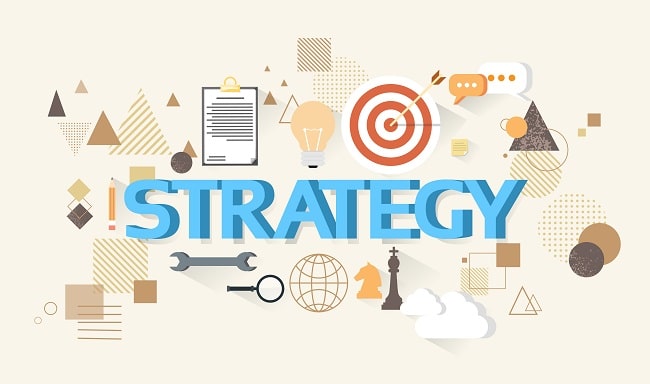Sales Strategies: Identifying Your Customers’ Needs
In the world of sales, understanding your customer isn’t just essential, it’s the lifeblood of success. Profound perception isn’t about a one-size-fits-all solution, it’s about knowing individual needs and desires. Strap in as we journey together through effective sales strategies that aim to shed light on how to identify exactly what your customers want and need.
We live in an era where selling isn’t just about pushing products or services; it’s about opening avenues of mutual benefit, about building relationships. The more you comprehend your customer’s unique requirements, the more likely you are to offer them a solution they can’t resist. So, let’s dive into the art of understanding customers better, shall we?
Why Identifying Customer Needs is Important
In any business strategy, prioritizing customer needs is paramount for success and sales is no exception. It’s all about understanding what your customers want, what they need, and what problems they are trying to solve. Once you know this, you can tailor your products or services to meet these needs and provide a solution. This approach not only improves the chances of a sale but also builds trust, strengthens the relationship, and fosters customer loyalty. Harvard Business Review provides a great deal of insight into the importance of this strategy.
The underpinning factor is that when you put your customers first, they feel valued. Their loyalty towards your brand increases and they are more likely to refer you to their friends and family. These word-of-mouth referrals are incredibly valuable and contribute significantly towards a healthy sales pipeline. According to Nielsen, people are four times more likely to buy when referred by a friend.
So, to accelerate your sales and meet your targets, making customers the core of your strategy is a smart move. It helps any business, whether you’re a start-up struggling to get off the ground, an SME trying to take the next big leap, or a multinational looking to maintain its market leadership. Businesses who prioritize customer needs in their strategy are often the same ones who exceed their sales targets and build loyal customers. Learning from them would be a step in the right direction.
To conclude, putting the customer at the forefront isn’t merely a strategy, but an ethos any thriving business should be constructed around. It’s not a one-size-fits-all kind of solution though, so it’s important to continually gather feedback to ensure your offerings remain relevant and desired by your customers. Effective prioritization of customer needs can be a game-changer, driving better sales and fostering stronger, more enduring relationships. The key is to keep in mind that customers are the lifeblood of every business. So, engage with them, value their feedback and always strive to meet their needs.
Strategies for Identifying Customer Needs
Understanding your customers’ needs is not a simple task as it involves analyzing numerous aspects effectively. Market research, for instance, is a proven way to get insights into what your consumers are looking for. It includes gathering information about your consumers, competition, and market. These details can help you to better align your product or service offerings with your consumers’ needs.
Customer surveys, on the other hand, provide an excellent opportunity to engage directly with your customers and solicit their opinions. Through surveys, you can ask your customers what they want, what they like or dislike about your product or services, and what improvements they want to see. It’s a potent tool for gathering customer feedback that can be used to shape better customer experiences.
To sum up, identifying what your customers truly want is vital in any business. It requires a robust strategy and a multi-pronged approach that includes conducting effective market research and engaging customers through surveys. Keep in mind that the key to business growth is a thorough understanding of your customer base.
For more detailed information about market research and customer surveys, you can visit authority websites such as Investopedia.
Applying Strategies to Improve Sales
Focusing on the final step of our discussion, we venture into the territory of transforming your comprehension of customer needs into viable sales strategies. It’s about shifting gears and adopting a far more customer-centric approach to drive your sales. The crux of the matter is viewing your sales objectives from the customer’s perspective. This includes anticipating their needs, preferences, and pain points, and tailoring your offerings accordingly to crack a winning sales strategy.
You might be curious to know, what is a customer-centric approach? In the simplest of terms, it’s an approach that places the customer at the core of all business decisions. This implies listening to your customers, understanding their needs, and aligning your strategies to serve them better. No longer are businesses just selling products or services; in today’s hyper-competitive marketplace, they are selling experiences and solutions customised to meet customer demands.
So, how exactly does a customer-centric approach impact sales turnover? When businesses put customers at the heart of their strategy, they often see better customer retention, higher customer satisfaction, and improved customer loyalty, all of which can directly lead to increased sales turnover. In this era where word-of-mouth marketing can make or break brands, a satisfied customer may lead to newer ones through referrals.
In short, understanding your customers and aligning your sales strategy to reflect their needs can prove to be a game-changer for your business. It’s about bridging the gap between what customers want and what businesses offer. The customer-centric approach is not just a buzzword, but a powerful tool for businesses savvy enough to leverage it.
Conclusion: Putting the Customers First
Wrapping up, it cannot be stressed enough how important understanding and identifying customer needs is for a successful sales strategy. This insight serves as a blueprint, steering businesses towards offering products and services that truly resonate with their clients. When your offerings align seamlessly with your customer’s needs, you are not just tendering a service or selling a product, you’re creating a meaningful customer interaction that boosts their loyalty.
In connection with improved customer loyalty, a customer-centric approach also offers numerous benefits for the business, such as enhanced sales performance. In an increasingly competitive marketplace, businesses can stick out from the competition and see a notable spike in sales by tailoring their offerings to meet their customer’s unique needs. In essence, taking the time to comprehend your customers’ needs is not only valuable – it’s crucial for business survival and growth.
More about Marketing :
Grasping the Importance of Customer Experience within Marketing Strategies, click here
The Journey to Global Advertising Leadership: Coca-Cola’s Comprehensive Marketing Case Analysis, click here
B2B Marketing Mastery: An In-Depth Guide, click here


